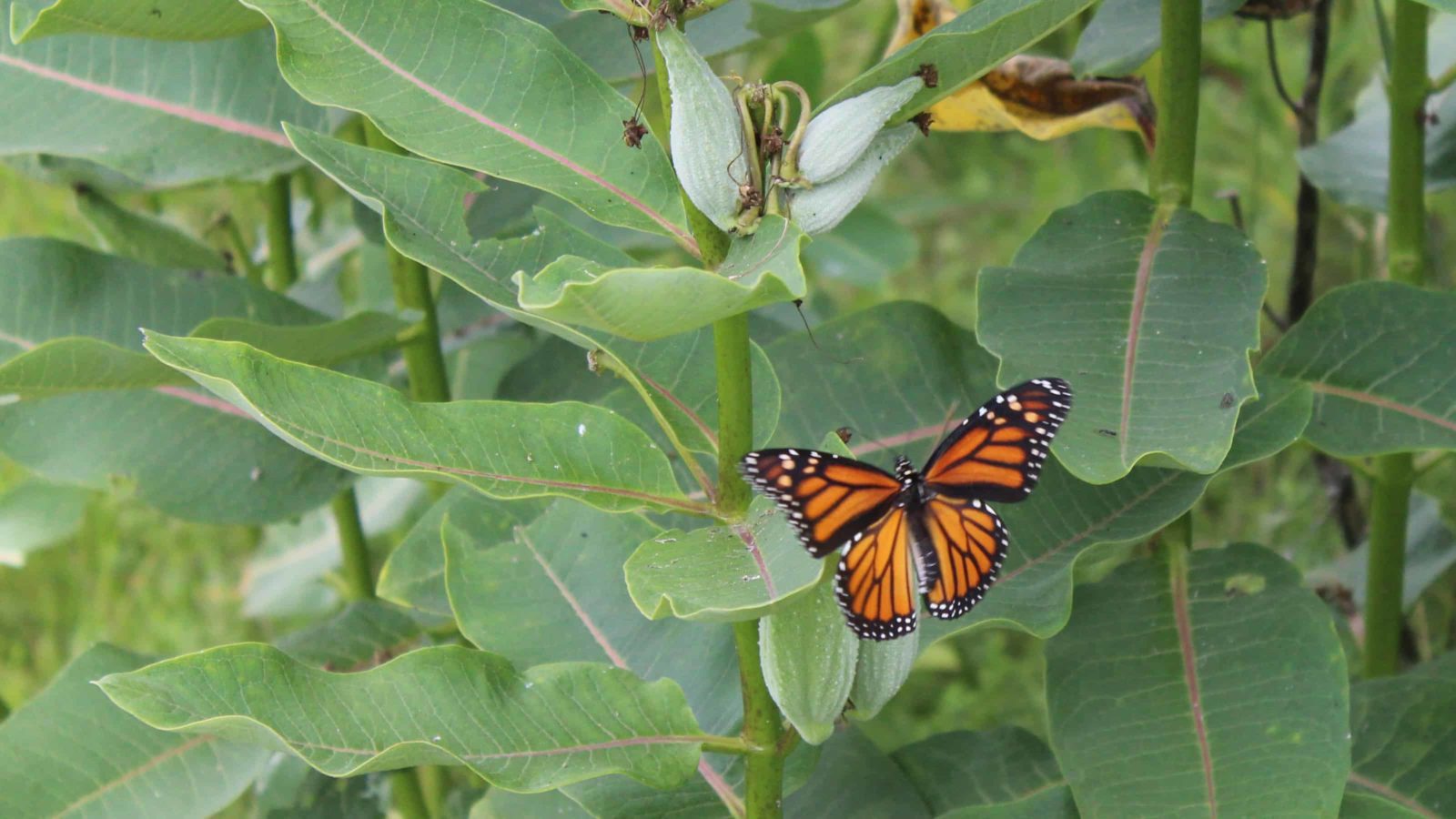Berkshire naturalist Thom Smith goes looking for butterflies and their food plants.
This early August afternoon, before a heavy rain drove me home, I watched two monarchs apparently mating and another acting as if it would soon be laying eggs. I found them on milkweed plants.
Flower and weed guides list Asclepiads syriaca as common milkweed, although there are several other names the plant would answer to, if it could: names like butterfly flower, silkweed, and silky swallow-word, cottonweed or wild cotton.
It grows along roadsides and in meadows, dry and cultivated fields, vacant lots along margins of cultivated croplands, and my favorite place is wherever I find it growing. I recently found some wild on two golf courses within a few minutes’ walk from where I live.
Having the plants close by, I have begun searching them for monarch butterflies. Milkweed plants are the only food monarch butterflies and caterpillars will eat: No milkweed, no monarchs. The adults feed on the nectar, and the caterpillars feed on the more tender milkweed leaves.
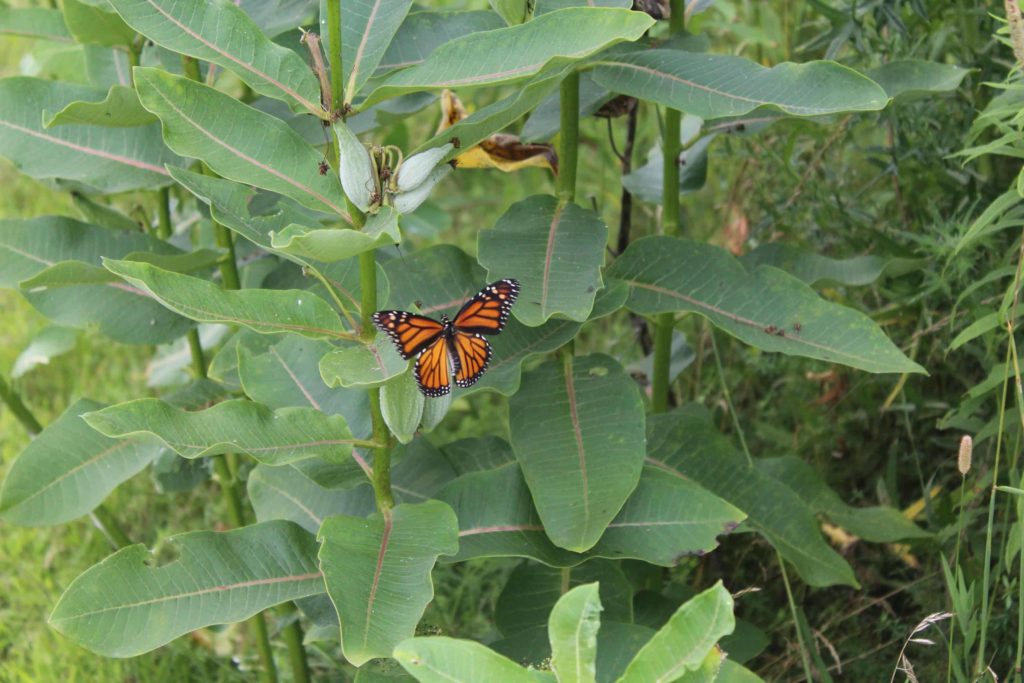
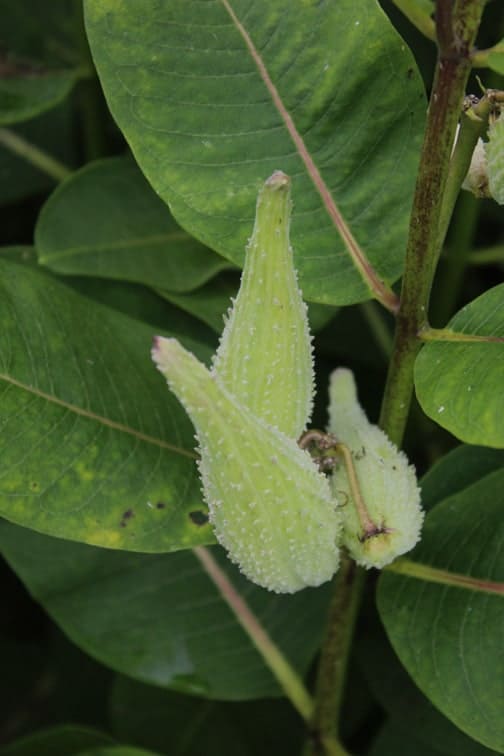
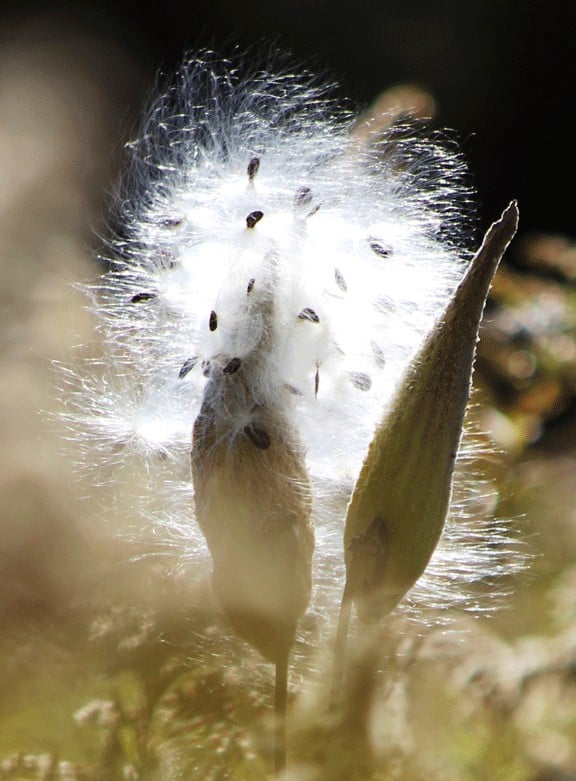
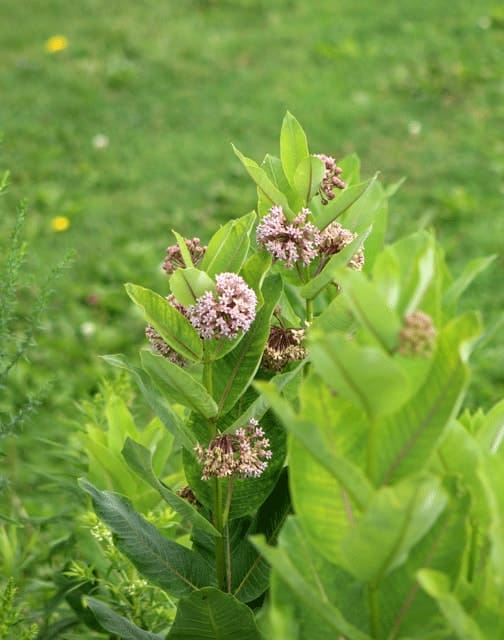
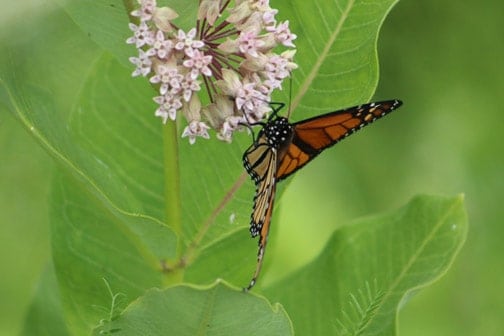
I have seen more butterflies this summer than I imagined — within a few days I must have seen a half dozen or more. Now I am hoping to find eggs, caterpillars and chrysalides.
At this time of summer, within a short distance, common milkweed plants may be seen in bud, full blossom, with others already producing seed pods. In late September through October, ripe pods will open releasing their ultra-light seed scattering air ships.
Along with the butterflies, people have found many uses for milkweed over the centuries. This native plant was new to European emigrants. Thanks to friendly American Indians who shared many of their discoveries, milkweed became somewhat of a medical miracle to treat problems like warts, ringworm and even poison ivy, by applying its thick, milky sap, or latex.
Physicians used its roots in the 1800s to treat kidney disorders, rheumatism and even venereal disease, which is probably why so many people died from that devastating disease.
Milkweed isn’t in Mosby’s Handbook of Herbs and Natural Supplements, so I warn against medicinal use, although prepared properly it becomes one of the better wild vegetables. I have eaten its young shoots and unopened flower buds and am still alive to tell the story. (Check a reputable wild food guide like Lee Peterson’s A Field Guide to Edible Wild Plants for simple instructions).
It was cultivated at one point for the silky down within its large seedpods, used to stuff mattresses and pillows and, during World War II, to fill flotation devices. About eight pounds of down with seed removed would fill a space of about five cubic feet, enough for a mattress. Another foor or two more would stuff a pillow or two. But the effort necessary keeps this use in the distant past.
In recent years though, milkweed has become a seed-producing crop, as efforts increase to help the monarch butterflies who need it.
We have three species of milkweed in our garden — the common (A. syriaca), swamp (A. incarnate), and butterfly-weed (A. tuberosa) — and I had hope of attracting monarchs here. They have come, but not in the numbers around the common milkweed along nearby roadsides and meadows.
If you are interested in planting milkweed for the monarch, you can buy seed or gather your own from ripe pods opening to release in October and plant the seeds that you remove from the down in the fall.
Common milkweed prefers dry or average soil. Swamp milkweed, as its name suggests, grows well moister soil, and butterfly-weed thrives in sandy dry soil. The last two have beautiful flowers, worth growing in any home garden.

